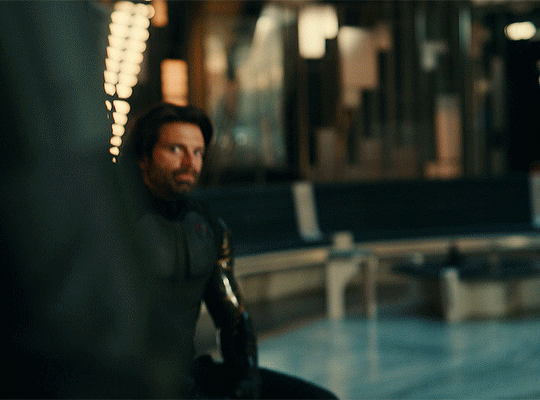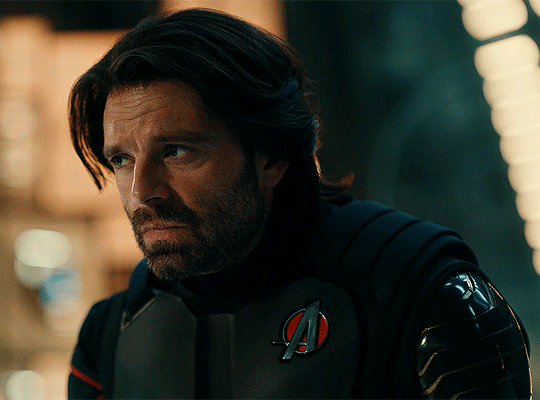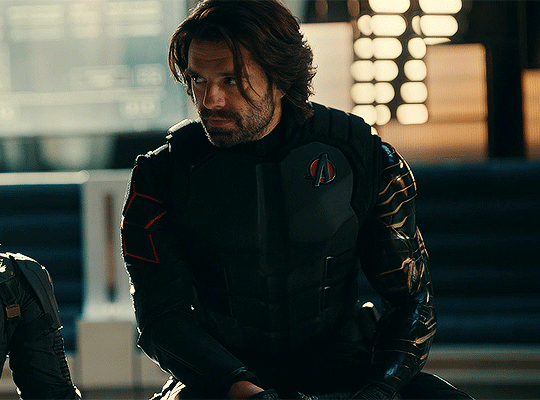vee ✨ late 20s. Barcelona. | Story-teller. English Major. MA in Cultural & Postcolonial Studies. Multifandom blog. Gremlin behavior. I read and write a lot, but I'm probably making tea right now. my works ✍🏼
Last active 60 minutes ago
Don't wanna be here? Send us removal request.
Text










'' but I've learned to live with the way that it hurts. '' BAD OMENS - SPECTER 04/04
195 notes
·
View notes
Text
Themes, symbolism, and meaning in Specter

It's been a week since Specter released, but it's all I've been thinking about and I couldn't stop myself from dissecting the cinematic masterpiece they created and write something about it. I haven't written anything "academic" since I completed my MA last year, so I really enjoyed sitting down to analyze the song and film, and put my thoughts and interpretations in a more or less coherent order.
If you'd like to read it, it's about 1.6k long, and it's basically a letter of gratitude to Bad Omens. I would loooove to hear your thoughts and read about your interpretations of the song and the film.
Content warning: talks/discussions of trauma and mental health below

ɞ Themes, symbolism, & meaning in Specter
Bad Omens’ new song and film Specter is a haunting and captivating masterpiece that pairs melancholic and profound lyrics with an evocative, unsettling composition. The film deepens the song’s subject, and it pulls us into an eerie, fragmented world of haunting imagery that seems to allude to the lingering presence of past experiences (trauma), the numbness and emptiness it brings, and the isolation, fear, and fractured identities that follow.
The film does not provide a linear plot but instead unfolds like a collage of themes and symbols, loosely connected yet very resonant when placed side by side. This lack of narrative clarity invites interpretation, encouraging us to consider whether it reflects the way we grapple with our own intrusive thoughts, repressed memories, and unresolved trauma.
The most prominent theme is the loss of identity, suggested not only by the song’s title, Specter, but also by lyrics such as: Oh, I'm changing, and I feel more like a ghost / Like a specter in your headlights on the road (verse 2). Alongside this identity erosion runs a sense of solitude and possible abandonment. In this vulnerable state of forced isolation, the song hints at dependence on others, a reliance that may not always be healthy, as I will explore later. Layered over this is a recurring motif of madness, portrayed in the lyrics with the line: Like a frenzy, like an ocean overflowed (verse 2), paired with a yearning for love and physical affection, encapsulated in the chorus, Do you feel love? I know I don’t, and in the image of a man with four arms embracing himself to compensate (I dare to assume) for the lack of affection. This lack of affection might be represented in the female figure standing and watching in the distance [4:16]. And lastly, the violence of it all.
These themes interlace to form a fragmented yet cohesive narrative of psychological disintegration, emotional illnesses, and unmet needs. The video’s symbolic visuals (skipping frames)—the kid, the ghosts, monsters, the door, the violence, the anthropomorphic figures—reinforce this descent into a surreal inner landscape where identity, sanity, and longing collide and work as a reflection of very real human struggles.
Delving into the symbolism of Specter, ghosts have long served in storytelling as vessels for layered meanings, ranging from literal spirits of the dead to metaphors for memory, loss, or absence. In Specter, the ghost seems to embody a fading presence and the erosion of the self: what we become when we are unseen, forgotten, or when we lose our identity (selfhood fades under trauma). This interpretation is reinforced in the sequence where a woman pushes a wheelchair occupied by a figure draped in a sheet—the ghost. Immediately after, a close-up reveals the ghost’s head contorted as it struggles to breath [1:10].
These images evoke the sickness and dependency that often follows when we’re sick. Healing can hinge on the quality of care we receive, and when that care is inadequate, or worse, harmful, it can become a trap. The woman behind the wheelchair could thus be interpreted as a caretaker who, whether through neglect, inability, or indifference, fails to meet the ghost’s true needs. The result is a cruel paradox: the ghostly figure, already diminished and abandoned, is further bound to a cycle of suffering by the very person meant to help. It becomes caged, not only by physical bounds, but also by the mind itself (which we all know, can be our own worst enemy).
If this caretaker figure becomes our nightmare (the reason we “can’t be in this place”, but we “can’t leave” either, due to our sickness) then the video’s unsettling portraits of individuals with crazed expressions and committing acts of violence can be understood as symbolic stand-ins for this presence, which don’t always have to be a personified. It only needs to be the embodiment of support that harms instead of heals (medication, for instance).
Sometimes, even when we recognize the harm, fear convinces us that we are safe. It builds a false fortress around us, whether because we dread judgment, because we fear being labeled as “sick” or “strange”, or because emptiness has taken root, leaving only a black chasm of terror. In moments of clarity, this illusion is shattered, echoing in the lyric: “It haunts me every time I think I’m safe”(bridge). So, our only option is to learn to live with it, “with the way that it hurts” (bridge).
The lyrics “something you’re missing made you who you were” (bridge) might hint at how the people that neglect us, who hurt us, also carry their own trauma, which can shape them into harmful figures in our lives. Evil, in this sense, emerges from the lack of care and support we needed.
Distancing ourselves could result in making matters worse (this makes reference to the continuation lyrics in the bridge 'Cause I've kept my distance, it just made it worse), whether by totally isolating ourselves in our sickness or by recognizing that removing ourselves might cause further harm to those around us, leading further to toxic relationships.
For someone trapped in this dynamic, the path often leads toward madness, an inevitable deterioration fueled by prolonged isolation and constant fear. Once fear gains control, madness follows.
This is represented visually by the woman dancing alone at night in the meadow, surrounded by misty fog, and the man crouching and jumping where the river flows. The monsters scattered throughout the film, particularly the scenes where men in the woods have monstrous reflections in the water, symbolize the darker self which trauma can create: a merciless “Other” always ready to pull us under in our weakest moments.
The creatures emerging from human figures could be read as a visual metaphor for this devouring aspect of the self; the internal predator born of fear and suffering, waiting for the chance to consume what little remains… That evil voice in our heads that, once it has convinced us of our own emptiness, makes us believe next that the pain we inflict upon ourselves is not only righteous but necessary. Mental illness is illogical to the well-ordered mind, but to its sufferers, it has an irrepressible internal logic.
The man in the river, mentioned before, almost naked and showing visible signs of madness, has a particular scene where he embraces himself with four arms. The extended limbs seem to symbolize the desperate need for support and affection, the absence of that person who should be there to hold us but is absent. When others fail to provide care or are simply not present, we are left with only ourselves to rely on. This act of self-embrace captures both desperation and self-reliance in the absence of others, a form of emotional survival. Yet, as noted earlier, this self-reliance can also turn against us in different ways. The mind, left alone with its fears and obsessions, may descend into the torment and chaos inherent to mental illness.
Finally, the door. The door emerges as a powerful symbol throughout the video. Doors often signify transition, escape, change or new possibilities. In Specter, one door burns, suggesting the ultimate denial of freedom. Amidst this nightmarish world, there is, however, a hint of hope, embodied in the child who appears throughout the narrative. Though I believe there are multiple stories unfolding simultaneously in Specter, the boy seems central: he is trapped in trauma, running, screaming, and previously shown in therapy covered with bedsheets to represent his loss of identity and sense of feeling lost in those clips shared on Bad Omens' Instagram. In the chaotic world Bad Omens creates, full of accidents, fires, violence, and ominous figures, the witchy figure in black donning a hat is not only the boy’s “other self”, but also a composite of everything that has hurt him: the people who failed him, the support he needed and didn’t get, and ultimately, what he has become (what we become at our worst). The recurrent violence in Specter, both physical and emotional, conveys the inescapable feeling of being trapped, mirrored by the burning door.
Yet, there is a subtle glimmer of hope, as I said a few lines above. At the end of the video, the kid walks toward a door that is not burning, which I choose to link to the shot of him stepping into a hall where Bad Omens is performing (the ghostly identity has finally regained its identity). This could symbolize overcoming the past and connecting with sources of comfort or guidance. In this interpretation, Bad Omens themselves become the saviors, offering hope and healing to the child, and, of course, to the audience. To us.
Noah Sebastian’s powerful and unique vocals amplify the sense of isolation and vulnerability within the cinematic narrative they’ve created. His rawness is enough to give goosebumps, pulling the listener into his emotional space. The song itself charts a journey into the darker corners of human nature and experience. The tempo drags you down, down, down, until it finally erupts in that single, visceral “hurt” scream, which is pure anger and pain. In that moment, Bad Omens encapsulates what it feels like to live through such emotions, condensing it all into one word.
All in all, Specter may lack a linear narrative, but close attention to its details immerses the viewer in a deeply personal experience, one that might mirror our own. The song and film provide a thread of cohesion and meaning to feelings that we might have found unable to articulate on our own. The film is dark, ominous, and violent; its lore is nightmare fuel. Yet, precisely through this reflection, it offers hope. By showing these experiences with breathtaking cinematography and powerful symbolism, Bad Omens conveys a message to all of us: “We understand you. You’re not alone.”
48 notes
·
View notes
Text
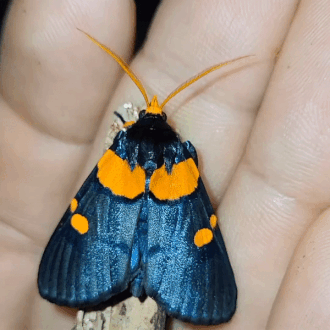
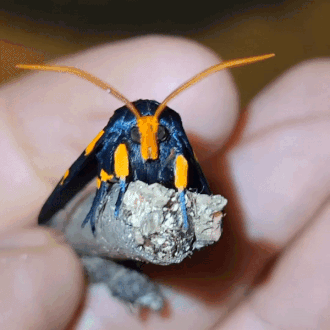
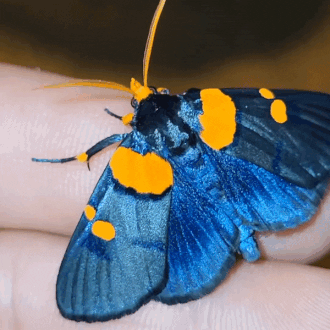
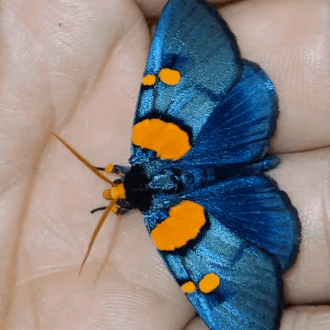
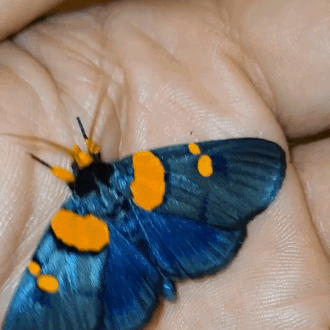

african peach moth (egybolis vaillantina) | source
40K notes
·
View notes
Text
me completely by myself in my room: alright everybody just calm down
96K notes
·
View notes
Text
dry humping where he’s on top of you and you can feel him against your core with every faux thrust and you’re both panting into each other’s mouths and it’s needier because you aren’t quite there he’s not actually inside you and you’re grabbing at his clothes and his hands are in your hair and he’s desperate and whining and
8K notes
·
View notes
Text




⎯ SPECTER
113 notes
·
View notes
Text







The cinematography in Specter
#bad omens#specter#let's talk about this because my mind is spiralling#every shot is insane insane insane#the concept of the video#the song#the lyrics and vocals#the motifs#i'm screAMING
85 notes
·
View notes
Text
you deserve someone who is gentle with you and your feelings
23K notes
·
View notes
Note
Are you excited for the new BO era???
I personally think the TDOPOM album is a masterpiece in every respect and it's been giving me bursts of inspiration to write (which is one of my favorite things to do) ever since it was released, so yes, I'm really excited for the new era! I can't wait to see what they're cooking! Whatever it is, I know it's going to be brutal and beautiful and astounding because they're not just musicians but incredible, visionary artists through and through 🥹
15 notes
·
View notes
Note
I love all your drawing so much😍
Noah and Oli you drew was very very awesome the other day🥹 would you draw Noah and Oli again??🥺✨

I know it’s been ages, I’m so sorry.but they’re here now
74 notes
·
View notes
Text
people without any whimsy scare me. why are you like that. where are your trinkets.
46K notes
·
View notes
Text
some of you probably think you’re really clingy and annoying but you’re actually really sweet and desirable so. get that out of your head
12K notes
·
View notes
Text
The majority of my romantic daydreams just consist of happily coexisting with someone. I just want to read on the sofa with my legs overlapped with someone. Someone reading out sections of a book they enjoy. Making someone coffee in the morning. Greeting someone when they get home. Goodnight kisses.....cooking dinner or getting takeout.....sharing clothes .....
2K notes
·
View notes
Text
to be loved softly in the harshness of this world
5K notes
·
View notes

